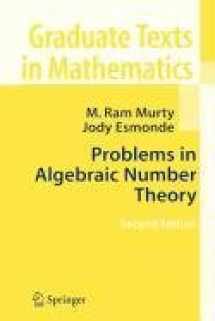
Problems in Algebraic Number Theory (Lecture Notes in Engineering)
ISBN-13:
9780387501475
ISBN-10:
0387501479
Author:
M. Ram Murty, Jody (Indigo) Esmonde
Publication date:
2008
Publisher:
Springer
Format:
Paperback
384 pages
FREE US shipping
Book details
ISBN-13:
9780387501475
ISBN-10:
0387501479
Author:
M. Ram Murty, Jody (Indigo) Esmonde
Publication date:
2008
Publisher:
Springer
Format:
Paperback
384 pages
Summary
Problems in Algebraic Number Theory (Lecture Notes in Engineering) (ISBN-13: 9780387501475 and ISBN-10: 0387501479), written by authors
M. Ram Murty, Jody (Indigo) Esmonde, was published by Springer in 2008.
With an overall rating of 3.9 stars, it's a notable title among other
books. You can easily purchase or rent Problems in Algebraic Number Theory (Lecture Notes in Engineering) (Paperback) from BooksRun,
along with many other new and used
books
and textbooks.
And, if you're looking to sell your copy, our current buyback offer is $0.54.
Description
Particle samplers are widely used in workplaces in order to determine the concentration of airborne particles in the atmosphere. They generally operate by drawing air, with the aid of a pump, through one or more orifices in the sampler body and housed within the sampler is a filter through which the air is subsequently drawn. The airborne particles are collected on the filter and their concentration is determined. Various samplers have been designed for this purpose including "static" samplers, which are located in a fixed position in a working environment and determine the dust concentration averaged over a prescribed period of time at that one point, and "personal" samplers which are mounted on a working person near to the breathing zone. The ORB sampler, a static sampler designed by Ogden and Birkett (1978) to have approximately the same entry efficiency, for particles with aerodynamical diameter up to at least 25~m, as a human head equally exposed to all wind directions for wind speeds between 0 and 2. 75m1s, is shown in Fig. l. l and examples of personal samplers are shown in Fig. 1. 2a, b and c and represent a single 4mm hole sampler, a seven hole sampler and a 25mm open face filter holder respectively. These three samplers are some of the most commonly used personal samplers for sampling the total airborne concentrations of workplace dusts in Britain.


We would LOVE it if you could help us and other readers by reviewing the book
Book review

Congratulations! We have received your book review.
{user}
{createdAt}
by {truncated_author}


